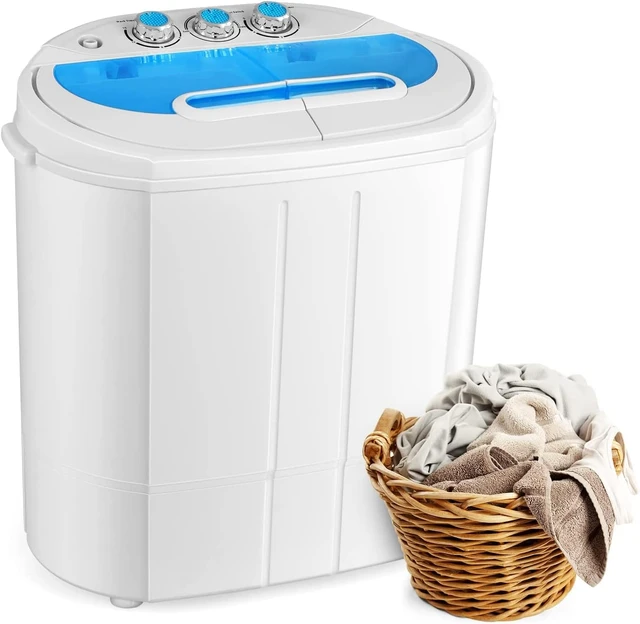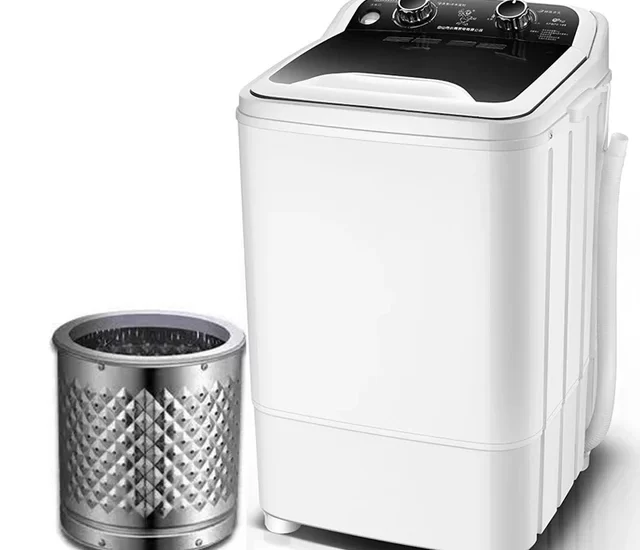 Introduction:
Introduction:
Discovering that your washing machine will not spin can be frustrating and disruptive to your laundry routine. However, understanding the possible causes and implementing the appropriate solutions can help you resolve the issue and get your washing machine back to working order. In this comprehensive guide, we will explore common reasons why a washing machine may not spin and provide practical troubleshooting steps to address the problem. By following these steps, you can restore the spinning functionality of your washing machine and ensure clean and thoroughly rinsed clothes.
 Introduction to Washing Machines Not Spinning
Introduction to Washing Machines Not Spinning
When a washing machine fails to spin, it can disrupt the entire laundry process, leaving clothes wet and soapy.
A. Importance of Spinning: The spinning function allows the washing machine to remove excess water from clothes, reducing drying time and ensuring thorough cleaning.
B. Troubleshooting Steps: Identifying the cause of the issue and performing appropriate troubleshooting steps is essential for resolving the problem.
 Some common types:
Some common types:
There are several types of washing machines available on the market, each offering different features and functionalities. Here are some common types:
Top-Loading Washing Machines:
Top-loading machines are the traditional style, where laundry is loaded and unloaded from the top of the machine. They are generally more affordable, have a larger capacity, and are easier to load and unload compared to front-loading machines. However, they tend to use more water and energy.
Front-Loading Washing Machines:
Front-loading machines have a door on the front through which laundry is loaded and unloaded. They are known for their energy efficiency, water efficiency, and superior cleaning performance. Front-loaders generally have more advanced features, such as customizable wash cycles, and can accommodate bulky items like comforters. However, they can be more expensive than top-loading machines.
High-Efficiency (HE) Washing Machines:
High-efficiency machines, whether top-loading or front-loading, are designed to use less water and energy compared to traditional washers. They typically have advanced features like quick wash cycles, delayed start options, and steam cleaning capabilities.
Compact Washing Machines:
Compact or portable washing machines are smaller in size and often used in apartments, RVs, or for small loads. These machines can be top-loading or front-loading and are ideal for those with limited space or who need a portable option.
Washer-Dryer Combos:
Washer-dryer combo machines are designed to combine the functions of both a washing machine and a dryer in a single unit. They are space-saving and useful for small living spaces where separate washer and dryer units may not be feasible.
Smart Washing Machines:
Smart washing machines are equipped with internet connectivity and can be controlled and monitored through smartphone apps. They often feature advanced settings, automatic detergent dispensing, and the ability to sync with other smart home devices.
The choice of washing machine type depends on factors such as available space, budget, desired features, energy efficiency, and personal preference. It’s important to consider your specific needs and lifestyle when selecting the right washing machine for your household.
 Common Causes of a Washing Machine Not Spinning
Common Causes of a Washing Machine Not Spinning
Several factors can contribute to a washing machine not spinning. Understanding these causes is crucial for effective troubleshooting.
A. Unbalanced Load: An unbalanced load can prevent the washing machine from spinning. Uneven distribution of clothes or a single heavy item may be the cause.
B. Lid Switch or Door Lock: If the lid switch or door lock mechanism is faulty, it may prevent the washing machine from spinning as a safety measure.
C. Drive Belt Issues: A worn-out or broken drive belt can hinder the spinning function of the washing machine.
D. Motor Problems: Motor-related issues, such as a malfunctioning motor, motor control board, or wiring problems, can impact the spinning functionality.
Troubleshooting and Solutions
Specific troubleshooting steps can help identify and resolve the issue when a washing machine will not spin.
A. Evenly Distribute the Load: Rearrange the clothes to ensure an even distribution within the washing machine drum, avoiding heavy or large items on one side.
B. Check the Lid Switch or Door Lock: Inspect the lid switch or door lock mechanism to ensure it is functioning properly. Repair or replace any faulty components.
C. Examine the Drive Belt: Inspect the drive belt for signs of wear, damage, or detachment. Replace the drive belt if necessary.
D. Motor and Wiring Inspection: Perform a visual inspection of the motor, motor control board, and associated wiring. Look for any obvious signs of damage, loose connections, or burnt wires.
E. Reset the Machine: Sometimes, a simple reset can resolve minor issues. Power off the washing machine, unplug it for a few minutes, and then power it back on.
Professional Assistance
In some cases, professional assistance may be necessary to address the issue of a washing machine not spinning.
A. Technical Expertise: If the troubleshooting steps do not resolve the problem, it may indicate a more complex issue that requires specialized knowledge and equipment to fix.
B. Warranty Coverage: If your washing machine is still under warranty, contacting the manufacturer or an authorized service center may be the best course of action.
Maintenance and Prevention
Regular maintenance and preventive measures can help prolong the life of your washing machine and prevent spinning issues.
A. Clean the Drum and Filters: Regularly clean the washing machine drum and remove any debris or build-up. Clean or replace filters as recommended by the manufacturer.
B. Balance the Load: Before starting a wash cycle, ensure that the load is balanced to prevent future spinning problems.
C. Follow Guidelines: Adhere to the manufacturer’s guidelines for proper loading capacity, detergent usage, and maintenance procedures.
 Conclusion
Conclusion
When faced with a washing machine that will not spin, it is important to troubleshoot and identify the underlying cause. Factors such as an unbalanced load, issues with the lid switch or door lock, drive belt problems, or motor-related issues can all contribute to the problem. By following the appropriate troubleshooting steps and implementing the solutions outlined in this guide, you can resolve the issue and restore your washing machine’s spinning functionality. Regular maintenance and preventive measures will help prevent future problems and ensure the continued efficiency of your washing machine.





